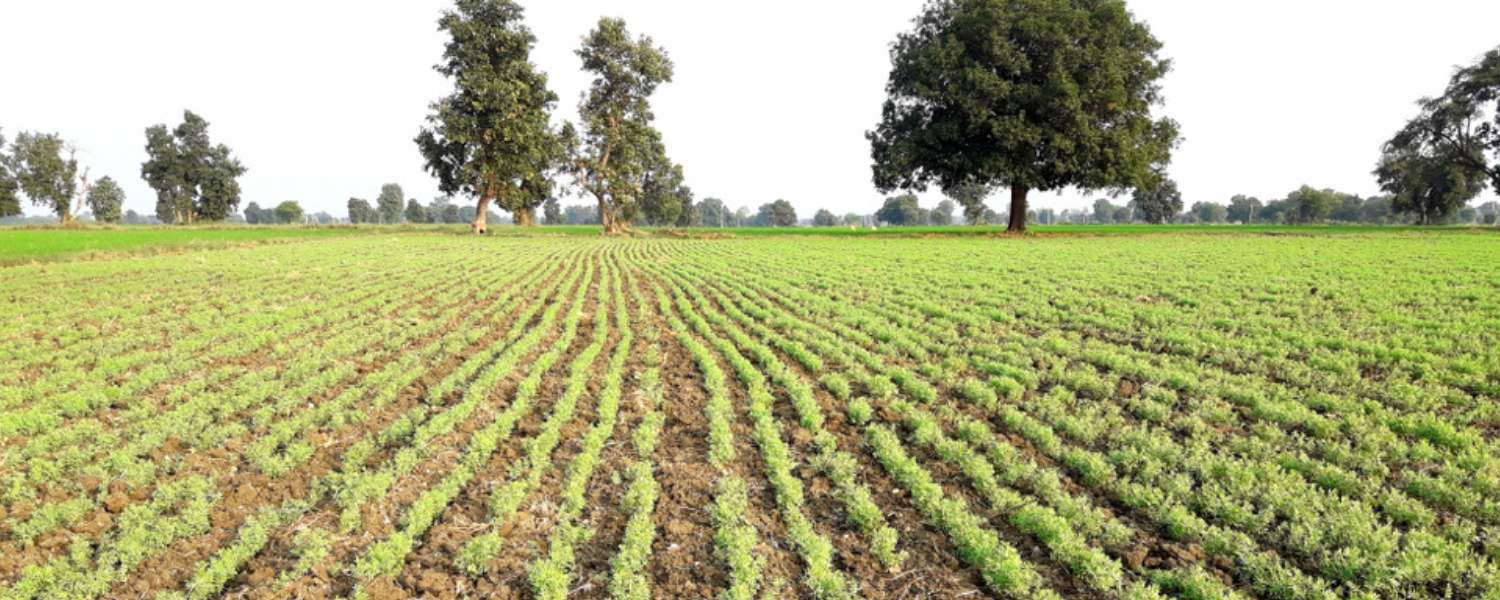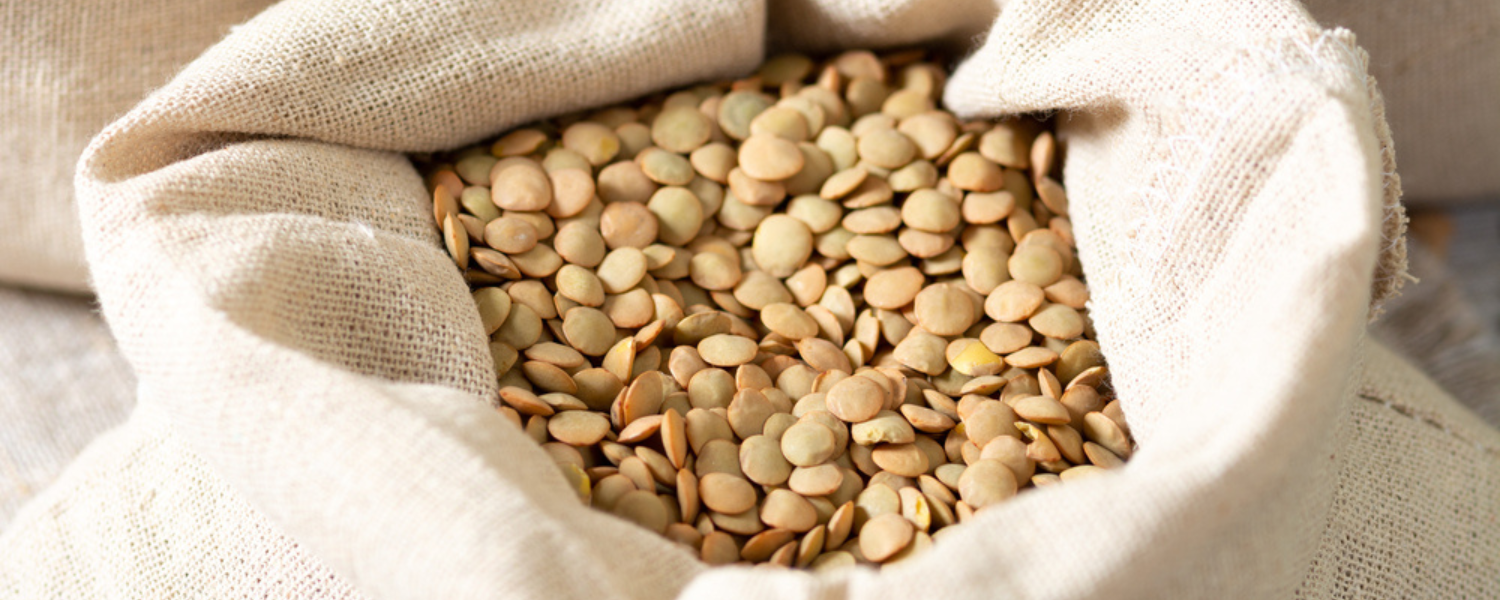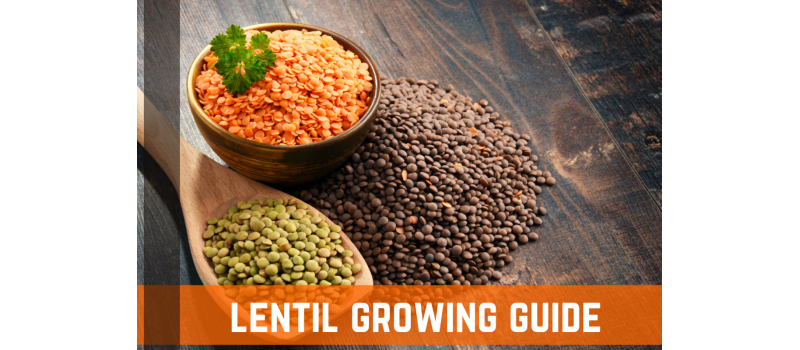Lentils are a versatile and nutritious legume that can be grown in various climates with relatively low maintenance. Whether you’re an experienced gardener or a beginner, this guide will walk you through everything you need to know about growing lentils—from choosing the right variety to harvesting and storing your crops. Let’s dive into the process of cultivating these tiny, protein-packed plants!

Choosing the Right Lentil Variety
Before planting, it’s important to select the right variety of lentils. There are several common types, each with slightly different characteristics:
- Green lentils: Larger in size, great for salads, and retain their shape well after cooking.
- Brown lentils: Common in soups and stews with a mild, earthy flavor.
- Red or yellow lentils: Split lentils used in Indian dishes, which cook quickly and have a softer texture.
- Black lentils (Beluga): Small, round lentils that resemble caviar and hold their shape well.
Consider your climate and intended use when picking a variety. Lentils prefer cool temperatures, so they grow well in the early spring or fall.

Preparing the Soil for Lentils
Lentils thrive in well-drained, loamy soil with a slightly acidic to neutral pH (6.0–7.0). Start by preparing the garden bed or field a few weeks before planting. Follow these steps to create the ideal growing conditions:
- Clear the area of weeds, rocks, and debris to ensure the young plants don’t compete for nutrients.
- Loosen the soil to about 6–8 inches deep with a garden fork or tiller to allow the roots to develop.
- Incorporate compost or aged manure to enrich the soil with organic matter and promote healthy growth. Lentils don’t need excessive nitrogen fertilizer, as they fix nitrogen from the air through their roots.
Lentils don’t grow well in waterlogged soil, so planting in raised beds or areas with good drainage will prevent root rot.
When and How to Plant Lentils
Timing your planting is key. Lentils prefer cooler weather and do best when planted in early spring or late summer for a fall harvest.
- Planting depth: Sow lentil seeds about 1 inch deep in rows that are 12–18 inches apart.
- Spacing: Plant the seeds 2–3 inches apart. Lentils are small plants that don’t require a lot of space between them.
- Watering after planting: Give the soil a light watering after sowing to kickstart germination. Avoid overwatering, as this can cause the seeds to rot.
Lentil seeds typically germinate within 10–14 days, depending on the temperature and soil moisture. In colder climates, starting the seeds indoors 2–3 weeks before the last frost date may help get a head start.

Caring for Lentil Plants
Once the seedlings have emerged, caring for your lentil plants requires regular monitoring but not much fuss. Follow these tips for healthy growth:
Watering
- Lentils prefer moderate moisture but can tolerate drought conditions once established. Water them once a week, ensuring the soil stays moist but not waterlogged.
- Reduce watering as the plants mature, especially as they begin to flower and produce pods.
Mulching
- Apply organic mulch around the plants to suppress weeds and retain soil moisture.
Weed Management
- Lentils grow best without competition from weeds. Hand-pulling weeds or using a hoe regularly will keep your crop healthy.
Support Structures
Some taller lentil varieties may benefit from light trellising or support to keep them upright, especially in windy areas.

Managing Pests and Diseases
Lentils are generally resilient, but a few pests and diseases can affect them. Here’s how to handle common issues:
Pests
- Aphids: These tiny insects suck sap from the plants. You can control them by spraying a solution of water and dish soap or releasing ladybugs (natural predators).
- Cutworms and caterpillars: Use row covers to protect young plants from being eaten.
Diseases
- Fusarium wilt and root rot are fungal diseases that affect lentils in poorly drained soil. Rotate crops yearly and avoid overwatering to prevent these issues.
- Powdery mildew: This fungal disease appears as white spots on leaves. It can be prevented by improving air circulation around the plants.
Using organic insecticidal soap or neem oil is also effective for treating both pests and fungal issues.

Harvesting Lentils
The lentil plant is ready for harvest when the pods turn yellow-brown and the leaves begin to dry out. This typically occurs 70–110 days after planting, depending on the variety and growing conditions. Follow these steps for harvesting:
- Cut the plants at the base using garden shears or scissors, leaving the roots in the soil to decompose and enrich the soil with nitrogen.
- Bundle the plants together and hang them in a dry, ventilated area for 7–10 days to allow the pods to dry fully.
- Once dry, thresh the pods by gently rubbing or shaking them to release the seeds.
Check for moisture—if the seeds feel soft or squishy, allow them to dry longer to prevent spoilage in storage.
Storing and Using Lentils
After harvesting, store your lentils properly to enjoy them all year. Here’s how:
- Sorting: Remove any debris, damaged seeds, or small rocks mixed in with the lentils.
- Storage conditions: Place the lentils in airtight containers and store them in a cool, dark place like a pantry. Properly stored lentils can last for up to a year.
- Cooking tips: Lentils don’t require soaking like other legumes. Simply rinse them and cook in water or broth for about 20–30 minutes.
Lentils are incredibly versatile—use them in soups, salads, stews, or even veggie burgers. They’re packed with protein, fiber, and essential nutrients, making them a great addition to any diet.
Growing lentils is a rewarding experience, whether you’re aiming to eat more plant-based foods or just looking to try your hand at cultivating legumes. With the right preparation, care, and harvesting techniques, you’ll enjoy a bountiful crop. From selecting the ideal variety to managing pests and diseases, this guide equips you with everything you need to grow healthy lentils at home. Happy gardening!

